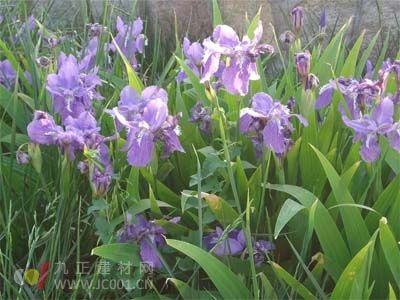Gladiolus Cultivation Management Method: (1) Gladiolus is mainly cultivated by planting bulbs. In spring, bulbs are sorted based on their size and then soaked in a solution of 70% methyl thiophanate powder diluted 800 times or carbendazim diluted 1000 times mixed with citric acid at 1500 times for 30 minutes. After that, they are kept at a temperature between 20°C and 25°C to encourage germination, and can be planted after about a week. For varieties that show severe virus infection and degeneration, stem detoxification can be used to rejuvenate the plants. (2) Conventional Gladiolus cultivation takes place under natural conditions, typically using bulbs with a diameter of 2.5 cm or larger. There are two main planting methods: ridge planting and direct planting, with a planting depth of 5 to 10 cm. The plant is most sensitive to environmental factors when the flower buds start to form, which usually happens when the second leaf appears. Low temperatures and insufficient light can lead to an increase in "blind flowers," which are flowers that fail to open properly. During land preparation, it's common to apply 6 to 9 kg of nitrogen, 6 to 12 kg of phosphorus, and 7 to 12 kg of potassium per mu. Throughout the growing season, three top-dressing applications are recommended: once when there are 2 to 3 leaves, again when the inflorescence emerges from the leaves, and finally 15 days after flowering. Each application helps support healthy growth and bloom development. (3) When promoting early cultivation of Gladiolus, it’s important to break the bulb's dormancy first. After harvesting, bulbs naturally break dormancy during late autumn to early winter due to low temperatures. However, for forced cultivation, manual dormancy breaking is required. This involves exposing the bulbs to 35°C for 15 to 20 days, followed by 2 to 3°C for 20 days before planting. This process ensures timely sprouting. If you want flowers from January to February, plant them in October or November. If planting occurs in December, the blooming period will be from March to May. From planting to flowering, it typically takes 100 to 120 days. The recommended spacing is 15 cm × 15 cm or 25 cm × 7 cm, with 40 to 60 bulbs per square meter. After planting, maintain daytime temperatures between 20°C and 25°C and nighttime temperatures around 15°C. (4) Gladiolus can also be used for delayed cultivation. After seed harvest, store them in a dry, cold room at 3 to 5°C. Plant them in greenhouses between July and August of the following year, and follow the same management practices as regular cultivation. (5) Cut flowers can be harvested between 60 to 100 days after planting, depending on the variety. Harvest when 1 to 5 small flowers at the base of the inflorescence are fully developed, and take the stem along with 2 to 3 leaves. Be careful not to damage the leaves left on the lower stems, as they help supply nutrients for new bulbs and offsets. Once harvested, grade the flower branches and store them at around 4°C. They should be delivered to consumers within 3 to 7 days. Prolonged storage or transportation may reduce the quality of the flowers. Performance advantages: VTM Tube,Tube VTM,VTM Tube Price,VTM Test,VTM Test Tube,Lab Test Tube,Small Test Tube,VTM Sampling Tube Yong Yue Medical Technology(Kunshan) Co.,Ltd , https://www.yonyue.com
1.Strong water absorption capacity
2.Increase the collection and release of samples
3.Good abrasion resistance
4.Do not scratch the wiped device
5.No chip drop
6.100% sterilization and disinfection
Operating Steps:
1 Touch the swab to the surface where it is aimed to obtain the sample.
2 Remove the tube cap and put the swab into the transport medium.
3 Break the shaft of the swab so that it will fit in the tube.
4 Close the cap securely.Write on the tube the necessary information about the patient and sample.
Gladiolus cultivation management method